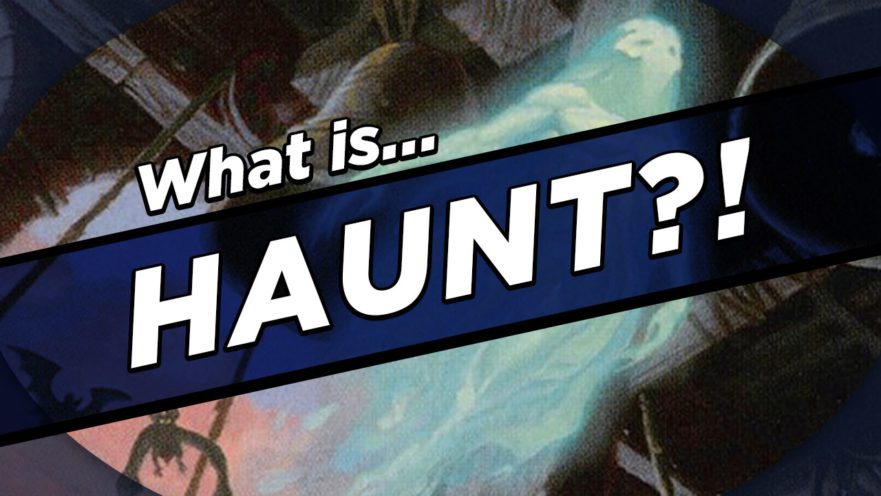Halloween may be behind us, but we’re covering another spooky MTG mechanic today: haunt!
What is Haunt?
Haunt appears on creatures, instants, and sorceries. For creatures, haunt triggers when the card goes to the graveyard from the battlefield; for instants and sorceries, it triggers after they resolve.
When Haunt triggers, you exile the card with haunt from the graveyard “attached” to a creature on the battlefield. That creature becomes “haunted” by the exiled card. Then, when the haunted creature dies, the exiled haunt card will trigger in the exile zone.
That may seem simple enough, but there are a few additional rules you should keep in mind:
- Instants and sorceries have to resolve for haunt to work. If the spell gets countered, nothing happens.
- You can haunt any creature on the battlefield, regardless of who owns or controls it.
- One creature can be haunted by multiple cards.
- Haunt cards stay in exile, even after the creature they’re haunting dies.
- If a haunt card is exiled from a graveyard in response to the haunt trigger, haunt fizzles. Same if a token copy of a spell or creature with haunt goes to the graveyard.
- If an exiled haunt card gets Pulled from Eternity or otherwise put somewhere else from exile, the haunt effect ends.
Here’s a weird example that might come up in your games: Say Player A steals a creature with haunt from Player B, and then it dies. Player A will choose which creature that card haunts, but Player B will control the effect of that haunt when it triggers.
Haunt lets you get more value from your cards, and it may disincentivize your opponents from killing your creatures. Consider adding some cards with haunt to your decks!

